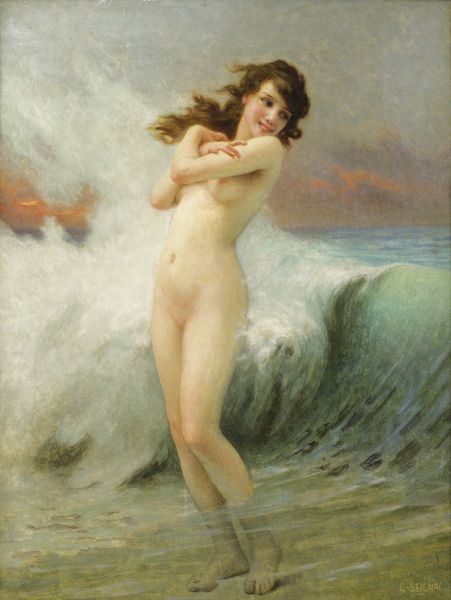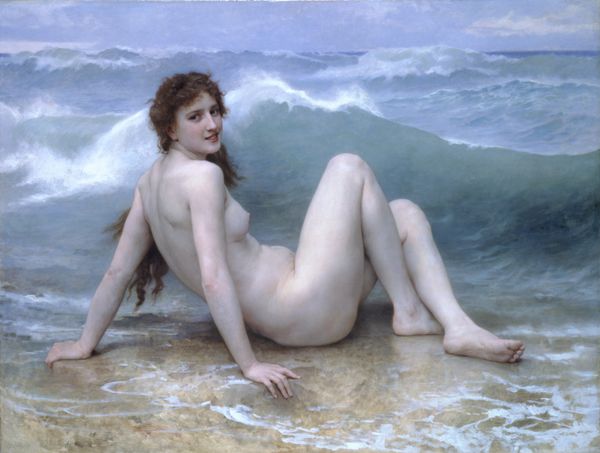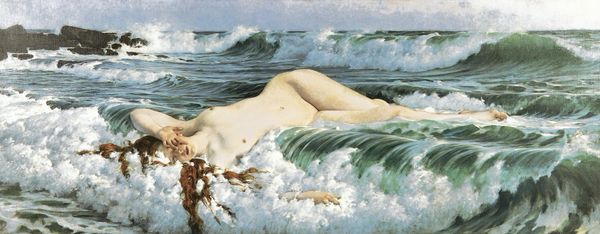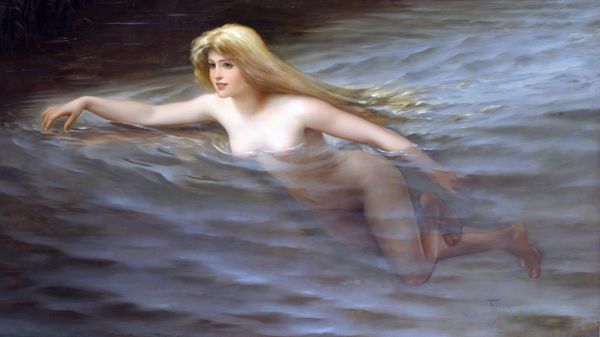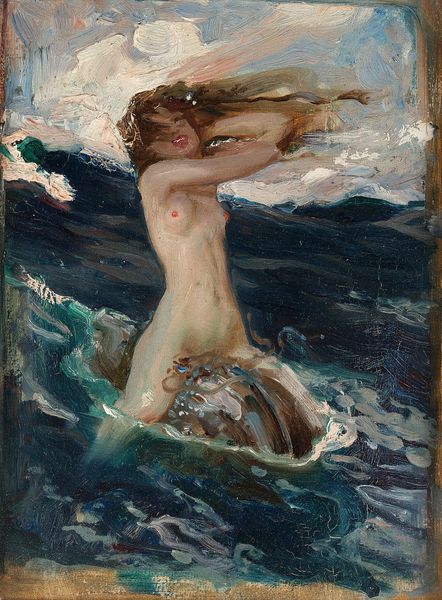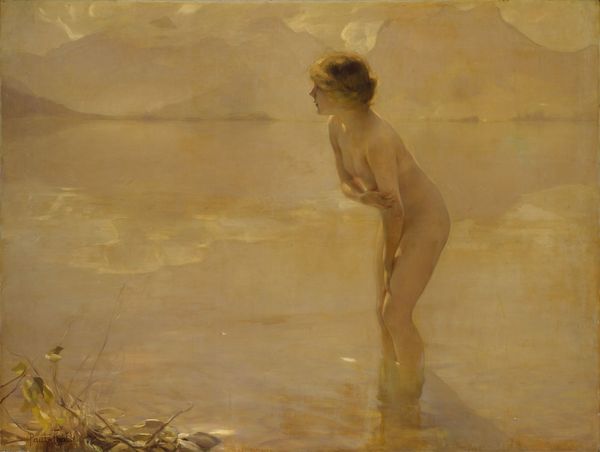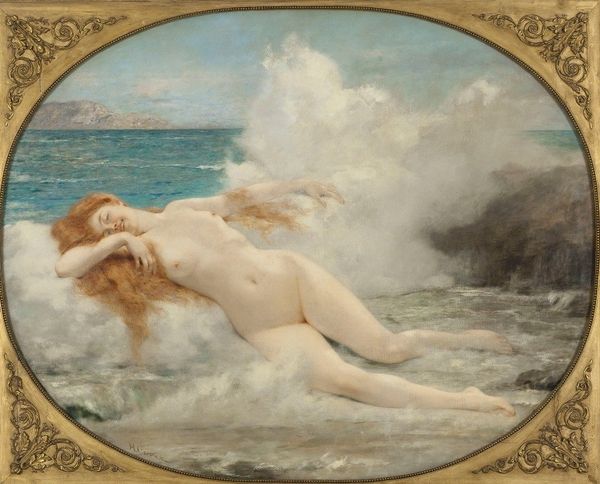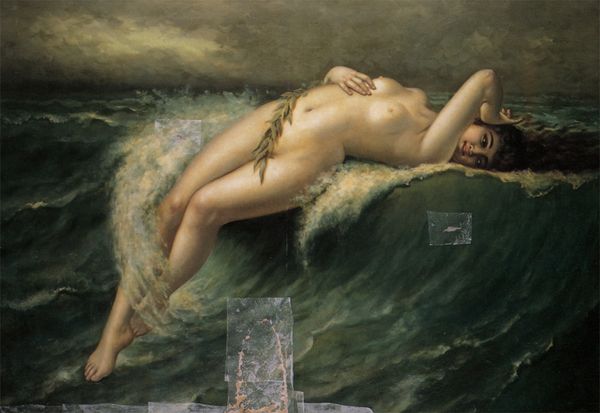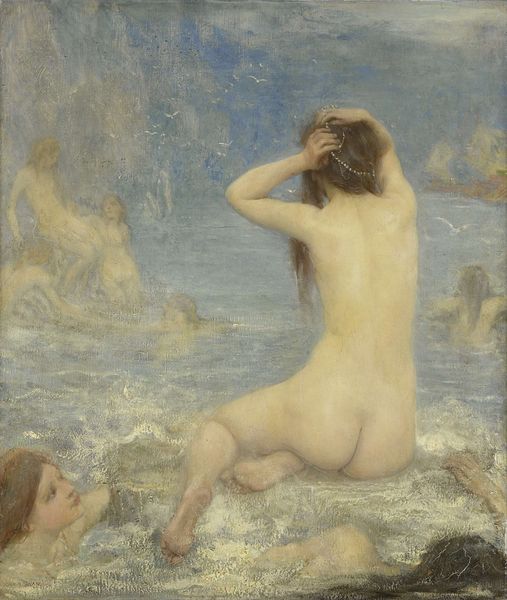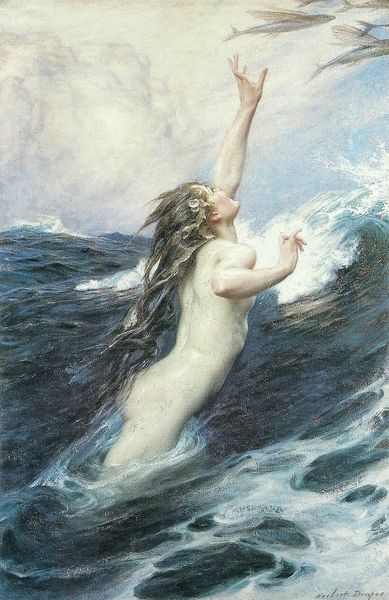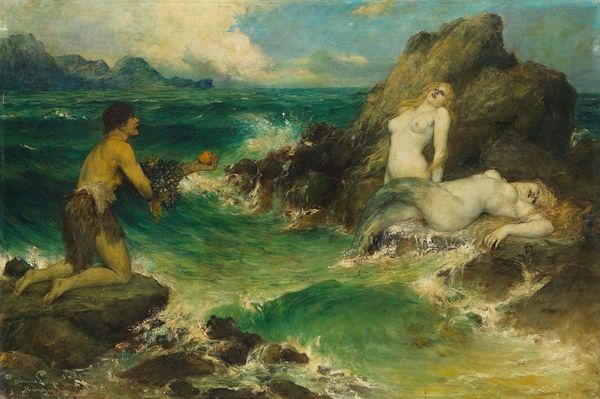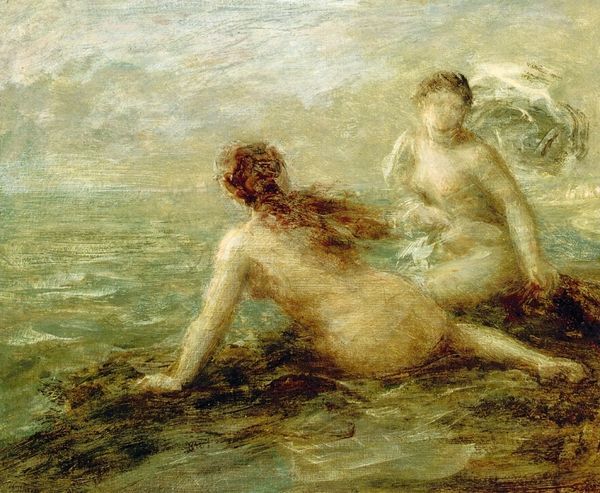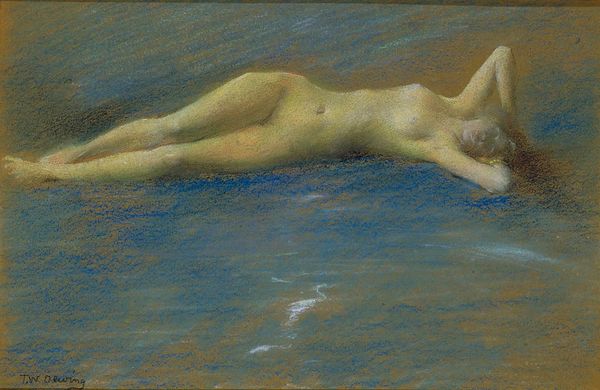
painting, oil-paint
#
painting
#
oil-paint
#
landscape
#
figuration
#
oil painting
#
symbolism
#
academic-art
#
nude
#
erotic-art
Copyright: Public domain
Curator: "La Vague", painted with oils by Guillaume Seignac. It's interesting how the institution of the academy in the late 19th century enabled artists to explore classical themes, albeit with a subtle eroticism to meet the market demand. Editor: Immediately, the fluidity strikes me. The languid pose, the merging of flesh and wave – it all speaks to a potent symbolism. The wave is like an embrace, both tender and powerful. Curator: Absolutely. It reflects the art world's embrace of "art for art's sake," yet paintings like these served very clear purposes within elite, bourgeois culture: they provided socially acceptable ways of displaying female nudity. The female nude became a cultural proxy and functioned as coded erotica in domestic settings, especially in fin-de-siècle France. Editor: That might be true, yet Seignac plays with water imagery so effectively. The ocean is a constant source of myth and legend, of course – a liminal space connecting life and death, the conscious and unconscious. He is tapping into those ancient wellsprings, linking this woman to that primal force. The way the wave almost becomes a flowing gown as it crashes. I almost want to compare it with Aphrodite who sprang forth from sea foam. Curator: You touch on something important when discussing ancient myths. It also draws upon art-historical tropes established by earlier academic artists and in ancient sculpture. Artists made sure that mythological scenes functioned for wealthy, upper-class patrons. The art wasn’t about radical, democratic expression – it was for sale. Editor: I see your point, but I'm drawn to the psychological power. The sunset, that melancholic sky—it's not just about objectification; it evokes feelings of solitude, of merging with something immense. A romantic connection of mortality and vast time represented by the seascape. The sunset is, after all, linked with nostalgia and endings. Curator: I suppose in the public arena these paintings create a sense of historical continuity and classical respectability for new fortunes. While our understanding changes, and critiques are vital, there's also something beautiful in this mastery. Editor: I agree. I walked in seeing a sensual image and maybe a bit more—seeing the endless echoes of ourselves in myth and symbol.
Comments
No comments
Be the first to comment and join the conversation on the ultimate creative platform.
